Crunching and shooting in the knee when bending and straightening
Find out what is behind the shooting and crunching in the knees and how to deal with it.


Learn more about our editorial process
.

Learn more about our editorial process
.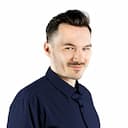

Learn more about our editorial process
.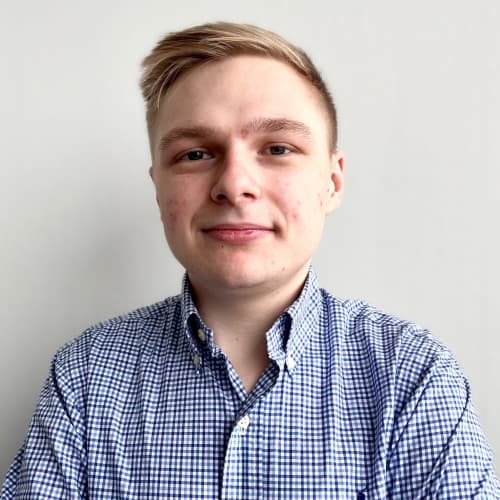

Learn more about our editorial process
.
Why you can trust us
Articles on Natu.Care are written based on scientific research, data from government websites and other reliable sources. The texts are written in cooperation with doctors, nutritionists and other health and beauty experts. Articles are reviewed before publication and during significant updates.
.Learn more about our editorial process
.Information about advertisements
Content on Natu.Care may contain links to products from the sale of which we may receive a commission. When creating content, we adhere to high editorial standards and take care to be objective about the products discussed. The presence of affiliate links is not dictated by our partners, and we select the products we review ourselves completely independently.
.Learn more about our terms and Conditions
.Shaking, crunching, popping - whichever dialect your knees are talking your knees, you're probably wondering if it's their call for help. Or maybe your knees just like to chat?"
Whether strange noises coming from the bend of your legs can herald trouble depends on how often they occur and whether they are accompanied by pain. If your knees are shooting up frequently (or all the time), it's worth looking into the causes.
If your knees are shooting up frequently (or all the time), it's worth looking into the causes.
From this article you will learn:
- Why knees crunch and pop.
- Why knees crunch and pop.
- When it could mean health problems. .
- What helps with shooting knees. .
- What are the best dietary supplements for crunchy knees. .
- Will home remedies help with shooting knees.
- What are the best dietary supplements for shooting knees?
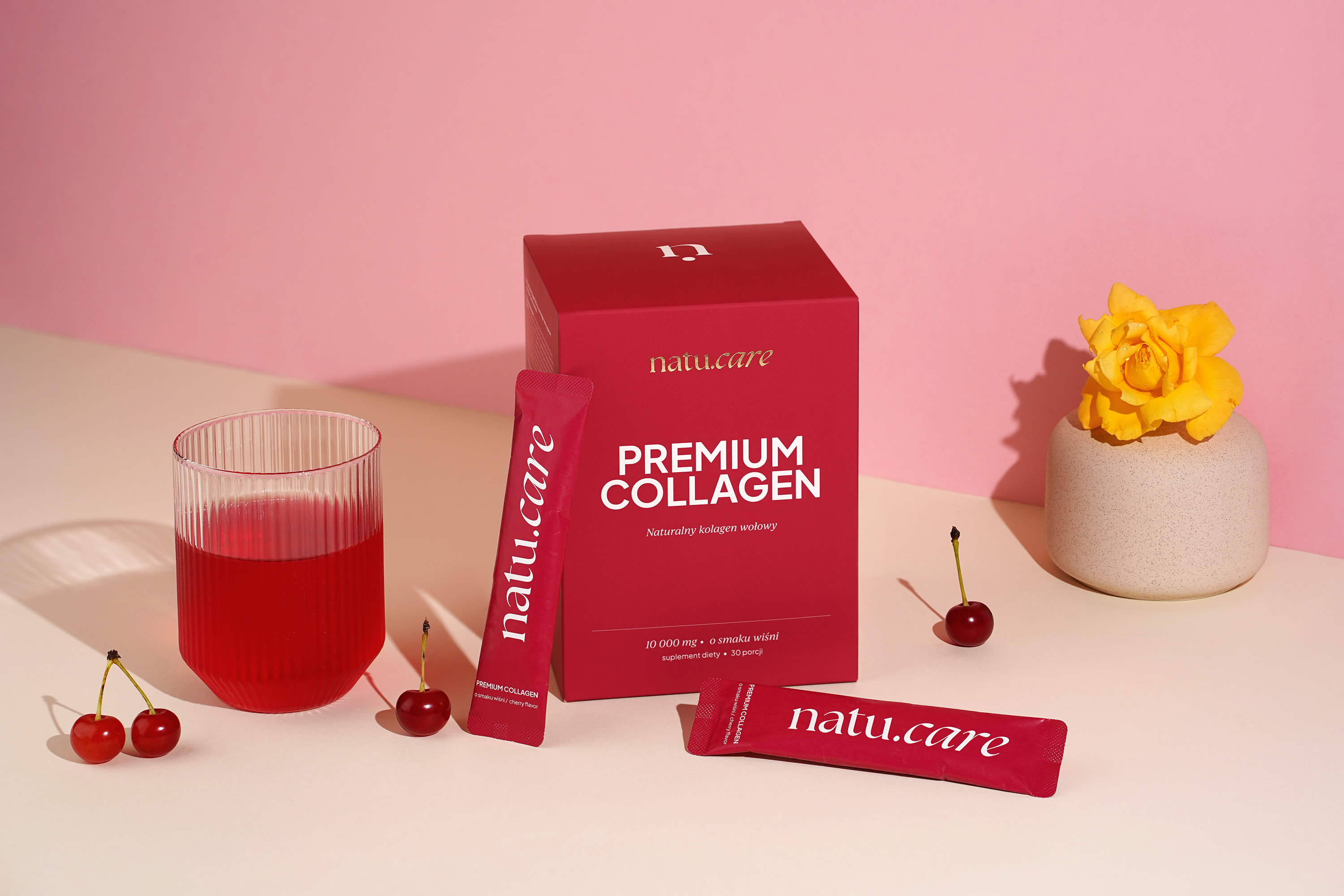
Sprawdź, jak może on zadbać o zdrowie Twoich stawów i urodę! Kolagen Premium (10 000 mg) wiśnia -15% z kodem BLOG15
Natu.Care Kolagen Premium 10000 mg, wiśnia
Natu.Care Kolagen Premium dla zdrowia stawów, skóry, paznokci i włosów. Wołowy kolagen w optymalnej dawce 10 000 mg. Przebadany przez niezależne laboratorium.
Sprawdź cenę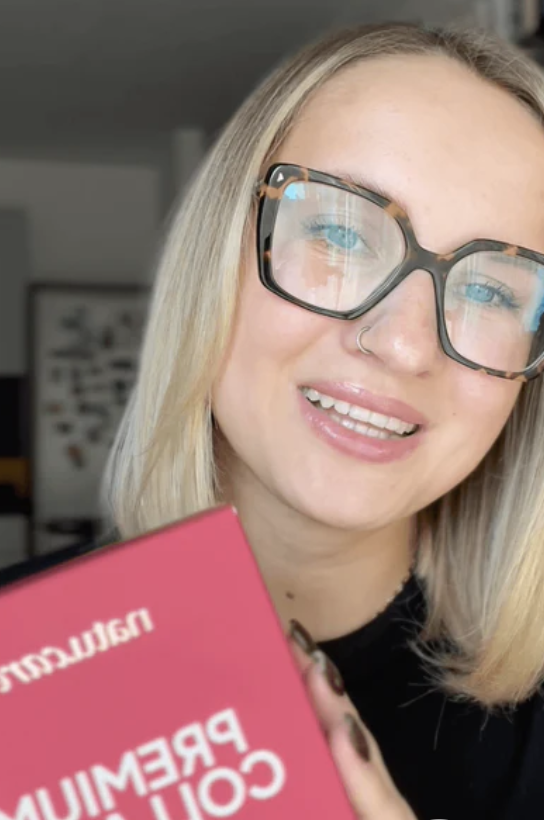
Ten kolagen dobrze się rozpuszcza, super smakuje – jak taki soczek wiśniowy. Moje włosy przestały wypadać, są gęstsze i zdrowsze a cera promienna.@Dominika P.
See also:
.
- Knee pain - causes and treatment .
- Home remedies for knee pain
- What is gonarthrosis
- Grandmother's ways for joints
- tennis elbow
- Golfer's elbow
Flashing knees - causes
.
Flashing knees, contrary to popular belief, are not necessarily related to arthritis. Most commonly, shooting knees are the result of lateralisation of the patella, or lateral patellar attachment. Lateralisation is usually the result of certain anatomical features, less commonly trauma.
Crackling in the knee can also be the result of normal physiological processes - everyone sometimes something crunches. This is due to carbon dioxide, which is released from the synovium and forms bubbles. The knee creaking when bending can be caused by the bursting of these bubbles. Such a phenomenon is completely harmless.
When, however, your knees crunch every time you bend or attempt to squat, it is worth looking into potential causes. If the shooting is not associated with pain or trauma and affects someone of a young age, in most cases it will be the result of patella lateralisationand.
Lateralisation of the patella versus crunching in the knee
.
Lateralization of the patella is a disruption of the traction of the patella, which does not move centrally in the femoral block. And to put it in human terms - the end of the femur at the knee joint has a special tunnel in which the patella should move. With lateralisation, it pops out of it and overwhelmingly runs outside the knee jointand.
The patella flees from the tunnel as a result of defects in the structure of the knee joint - with a so-called high patellar position or due to an overriding mechanical force of the lateral trochlea. This occurs when the quadriceps muscle, which stabilises the position of the patella, is weakened and the lateral trochlea starts to dominateand.
Lateralisation of the patella is also favoured by joint flaccidity. This is excessive joint mobility, as a result of the specific structure of the joint capsule and ligaments. Want to know if you have it? Try touching your thumb to the forearm of the same hand. Simply draw your thumb gently with your other hand (but not forcefully - don't break to prove something). If you have succeeded, then you have a joint limp. This feature in itself is not dangerous, but it can lead to some musculoskeletal complaints.
The extreme form of lateral patellar dislocation is dislocation of the patella. Interestingly, it is most common in adolescent girlsand.
If left untreated, lateral patellar spurs can lead to excessive abrasion of the articular cartilage and, in the long term, degeneration of the knee joint .
.
Other causes of knee shaking
.
In older people, knee popping may be caused by gonarthrosis, a degeneration of the knee joint. The sounds coming from the knee may be due to friction of the bone surface or the patella escaping onto the femurand.
Knee popping can also occur with meniscus disease and trauma to the knee joint . It also sometimes accompanies the recovery process after knee surgery.
.
Knee crunching versus skipping in the knee
.
Knee popping is basically the sound of the patella or (in rarer cases) the meniscus jumping. If you clearly feel that something is jumping in your knee when you bend it - this is the last moment to seek appropriate treatment.
If your knee is jumping, you should seek treatment.
If the patella is jumping and you don't address the problem, the next stop is to dislocate itand. You don't want that.
The meniscus can also detach from the bone (due to trauma) and curl up on the femur . This sometimes gives a 'skipping' sensation.
.
Knee crunch and pain
.
What about when your knees were not shooting every day, but suddenly it crunched and now you feel pain? This unfortunately means that you have probably damaged at least one part of your knee joint. And crunching can be either torn ligaments, meniscus or cracked bone.
A sudden crunching and pain in the knee is typical with an injury, so in such a case it is best to see a doctor immediately.
Squeezing in the knee after surgery
.
If you are following a surgical procedure performed on your knee joint, you may also experience crunching and popping in your knee during your recovery.
Shaking in the knee
.
Crackling in the knee after endoprosthesis
.
You may be able to hear the prosthesis itself working at first (until - say - its mechanism works out). It may also be that your kneecap will slip off it, as this component of the knee joint is not usually replaced when an endoprosthesis is insertedand.
Shaking in the knee after arthroscopy
.
Arthroscopy is a minimally invasive procedure that should not cause the side effects of shooting knees. It may be that the causes of these sounds lie elsewhere, and you are simply paying more attention to them after the procedure.
Scrunching in the knee after ACL reconstruction
.
When recovering from ACL ( anterior cruciate ligament) reconstruction surgery, or anterior cruciate ligament in the knee, patients sometimes experience crunching and popping. This has to do with tissue balance, or tissue tension (including the reconstructed ligament)and.
What for shooting knees - treatment
.
In order to effectively combat the crunching in the knees, the causes must first be addressed. A lateralisation of the patella, meniscus problems or gonarthrosis will be treated completely differently. Well, since lateralisation of the patella is most often responsible for knee crunching, here are some words about its treatment.
Lateral patellar tendonitis is normally treated with exercises to strengthen the quadriceps (see later in this article for how to exercise). Oral or topical medications to increase synovial production, such as medications with glucosamine and chondroitin, or injections of hyaluronic acidand can also help.
.
It should be emphasised, however, that medication is only a means of alleviating symptoms, and that the correct method of treatment is actually exercise.
.
For very advanced lateralisation, i.e. with frequent dislocations of the patella or very acute knee pain, surgical treatment is also used. Most often, the doctor arthroscopically resects the lateral trochlea of the knee. In the most severe cases, an osteotomy is performed, relocating the distal attachment of the patellar collateral ligament.
Meal for shooting in the knee
.
There is no such thing as an ointment for shooting in the knee. No cream or gel will be able to eliminate this ailment. Ointments and lotions can only be used to help with knee osteoarthritis, but these will tend to be analgesic and anti-inflammatoryand.
The ointment for popping in the knee will help you if the popping is related to swelling and fluid collected in the knee joint due to inflammation. But in such cases, the crunching in the knee is unlikely to worry you. Rushing to the orthopaedist is more likely to focus on the pain and swelling...
Knee crunch - supplements
.
The best supplements for crunch in the knee contain collagen, hyaluronic acid and may be enriched with glucosamine and chondroitin. A combination of collagen and hyaluronic acid in an effective daily dose can be found, for example, in Collagen Premium Natu.Care.
Natu.Care Collagen Premium 5000 mg, mango-maracuja
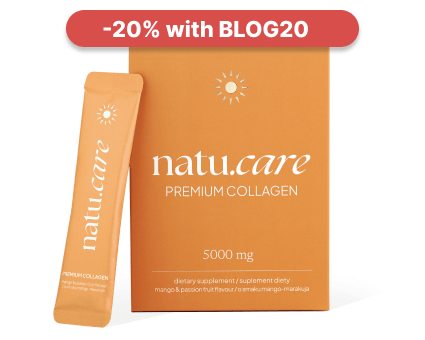
- Collagen content: 5000 mg marine collagen hydrolysate
- .
- Additional active ingredients: vitamin C, low molecular weight hyaluronic acid (and L-theanine and coenzyme Q10 in cocoa flavoured collagen or vitamin A and vitamin E in mango–passion fruit flavoured collagen)
- .
- Form: powder sachets
- .
- Dose: 1 sachet per day
- .
- Sufficient for: 30 days
- .
Product description
Fish collagen from the Natu.Care brand in a dose of 5000 mg. The formula contains a sufficient portion of the active substance to positively affect your joints, musculoskeletal system and immunity.
Take care of your tendons, joint cartilage, ligaments, muscles and even bones by supplying them with the building blocks to function properly. Move without bólu and provide the necessary support for any physical activity.
And as a „gratis” to regular supplementation, you will also receive firm skinóhand, healthy and shiny hair and strong nails.
Natu.Care Premium Collagen is available in two flavours – Cacao Bloom and Rise&Shine. Both formulas are based on the following active ingredients: marine collagen hydrolysate, wild roseóbud extract and hyaluronic acid.
Additionally, Cacao Bloom contains natural L-theanine, coenzyme Q10 and defatted Dutch cacao. Rise&Shine instead contains vitamin E and vitamin A.
These are the best collagens in the world.
These best fish collagens on the market also rós taste – Cacao Bloom is a treat for chocolate lovers. Rise&Shine will appeal to those whoóenjoy the refreshing taste of mangoófruit and passion fruit.
Pros and cons
Fish collagen from the Natu.Care brand in a dose of 5000 mg. The formula contains a sufficient portion of the active substance to positively affect your joints, musculoskeletal system and immunity.
Take care of your tendons, joint cartilage, ligaments, muscles and even bones by supplying them with the building blocks to function properly. Move without bólu and provide the necessary support for any physical activity.
And as a „gratis” to regular supplementation, you will also receive firm skinóhand, healthy and shiny hair and strong nails.
Natu.Care Premium Collagen is available in two flavours – Cacao Bloom and Rise&Shine. Both formulas are based on the following active ingredients: marine collagen hydrolysate, wild roseóbud extract and hyaluronic acid.
Additionally, Cacao Bloom contains natural L-theanine, coenzyme Q10 and defatted Dutch cacao. Rise&Shine instead contains vitamin E and vitamin A.
These are the best collagens in the world.
These best fish collagens on the market also rós taste – Cacao Bloom is a treat for chocolate lovers. Rise&Shine will appeal to those whoóenjoy the refreshing taste of mangoófruit and passion fruit.
Additional information
Fish collagen from the Natu.Care brand in a dose of 5000 mg. The formula contains a sufficient portion of the active substance to positively affect your joints, musculoskeletal system and immunity.
Take care of your tendons, joint cartilage, ligaments, muscles and even bones by supplying them with the building blocks to function properly. Move without bólu and provide the necessary support for any physical activity.
And as a „gratis” to regular supplementation, you will also receive firm skinóhand, healthy and shiny hair and strong nails.
Natu.Care Premium Collagen is available in two flavours – Cacao Bloom and Rise&Shine. Both formulas are based on the following active ingredients: marine collagen hydrolysate, wild roseóbud extract and hyaluronic acid.
Additionally, Cacao Bloom contains natural L-theanine, coenzyme Q10 and defatted Dutch cacao. Rise&Shine instead contains vitamin E and vitamin A.
These are the best collagens in the world.
These best fish collagens on the market also rós taste – Cacao Bloom is a treat for chocolate lovers. Rise&Shine will appeal to those whoóenjoy the refreshing taste of mangoófruit and passion fruit.
User review
Fish collagen from the Natu.Care brand in a dose of 5000 mg. The formula contains a sufficient portion of the active substance to positively affect your joints, musculoskeletal system and immunity.
Take care of your tendons, joint cartilage, ligaments, muscles and even bones by supplying them with the building blocks to function properly. Move without bólu and provide the necessary support for any physical activity.
And as a „gratis” to regular supplementation, you will also receive firm skinóhand, healthy and shiny hair and strong nails.
Natu.Care Premium Collagen is available in two flavours – Cacao Bloom and Rise&Shine. Both formulas are based on the following active ingredients: marine collagen hydrolysate, wild roseóbud extract and hyaluronic acid.
Additionally, Cacao Bloom contains natural L-theanine, coenzyme Q10 and defatted Dutch cacao. Rise&Shine instead contains vitamin E and vitamin A.
These are the best collagens in the world.
These best fish collagens on the market also rós taste – Cacao Bloom is a treat for chocolate lovers. Rise&Shine will appeal to those whoóenjoy the refreshing taste of mangoófruit and passion fruit.
Natu.Care Collagen Premium 10000 mg, cherry
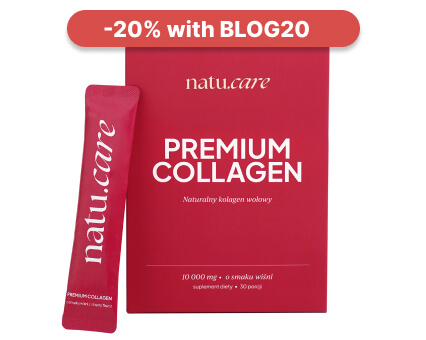
- Collagen content: 10,000 mg of hydrolyzed bovine collagen
- Additional active ingredients: vitamin C, low molecular weight hyaluronic acid, glucosamine, chondroitin, extract of Indian frankincense resin (boswellia serrata)
- Form: powder sachets for drinking
- Serving: 1 sachet per day
- Lasts for: 30 days
Product description
One of the strongest collagens on the market, providing as much as 10,000 mg per daily serving. This product can effectively support the condition of joints, skin, hair, and nails.
With this supplement, you will support your skeletal and joint system as well as your beauty, helping you visually halt the aging process and feel rejuvenated!
Pros and cons
Pros:
- The daily portion of collagen is very large – as much as 10,000 mg.
- Proven collagen formula – COLLinstant, whose effectiveness has been confirmed in clinical studies.
- Effective dose of hyaluronic acid, which additionally moisturizes the skin and positively affects joint health.
- Vitamin C supports the body's natural collagen production.
- Glucosamine is a fundamental building block of compounds found in joint cartilage and a component of collagen that gives elasticity to connective tissue in tendons.
- Chondroitin is a natural component found in the human body, mainly in cartilage. This large molecule (mucopolysaccharide) has the ability to absorb water, which helps maintain the elasticity and resilience of cartilage.
- Frankincense resin extract supports blood circulation and joint mobility and reduces their stiffness. It may help alleviate inflammatory conditions.
- The composition has been tested by the independent and accredited J.S. Hamilton laboratory.
Cons:
- None.
Additional information
Users praise Natu.Care Collagen Premium for the easy dissolving of the powder.
ALLDEYNN Collarose Fish
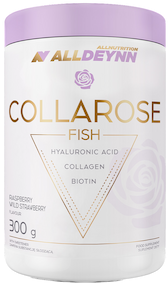
- Collagen content: 5000 mg hydrolysate fish collagen VERISOL F® .
- Additional active ingredients: vitamin C, hyaluronic acid, biotin
- Form: powder to dissolve in water .
- Dose: one scoop (6 g) of powder daily .
- Sufficient for: 50 days .
Product description
Atlantic cod collagen VERISOL F® contained in the formula are easily absorbed collagen peptides of fish origin. Regular supplementation can firm your skinóhand and slow down the ageing process. Your nails will become stronger and stop breaking. The addition of biotin will improve the condition of your hairów. The collagen portion is high enough to also have a good effect on your joints, muscles and bones.
Pros and cons
Atlantic cod collagen VERISOL F® contained in the formula are easily absorbed collagen peptides of fish origin. Regular supplementation can firm your skinóhand and slow down the ageing process. Your nails will become stronger and stop breaking. The addition of biotin will improve the condition of your hairów. The collagen portion is high enough to also have a good effect on your joints, muscles and bones.
Additional information
Atlantic cod collagen VERISOL F® contained in the formula are easily absorbed collagen peptides of fish origin. Regular supplementation can firm your skinóhand and slow down the ageing process. Your nails will become stronger and stop breaking. The addition of biotin will improve the condition of your hairów. The collagen portion is high enough to also have a good effect on your joints, muscles and bones.
Expert and user opinion
Atlantic cod collagen VERISOL F® contained in the formula are easily absorbed collagen peptides of fish origin. Regular supplementation can firm your skinóhand and slow down the ageing process. Your nails will become stronger and stop breaking. The addition of biotin will improve the condition of your hairów. The collagen portion is high enough to also have a good effect on your joints, muscles and bones.
DuoLife Collagen fish collagen 2500 mg
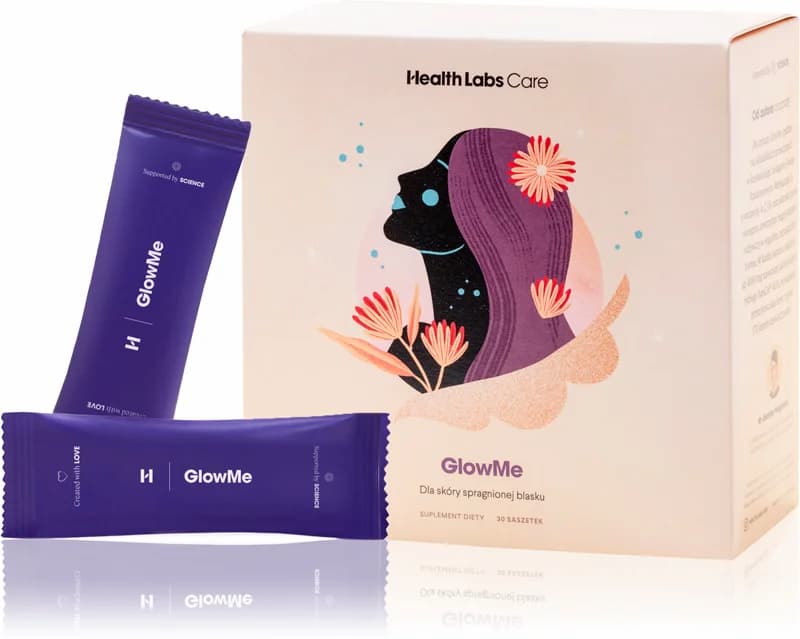
- Collagen content: 2500 mg collagen
- Additional active ingredients: vitamin C, silicon, glucosamine, hyaluronic acid, nettle and bamboo extracts
- Form: liquid to drink .
- Dose:25 ml .
- Sufficient for: 30 days .
Product description
100% natural collagen liquid without unnecessary ingredientsós. The composition of ingredientsós improves the appearance and condition of skinóry, hairów, nails. DuoLife is a good choiceór if you notice the first signs of skinóry ageing or want to stop this process. A tasty liquid, convenient to use.
Pros and cons
100% natural collagen liquid without unnecessary ingredientsós. The composition of ingredientsós improves the appearance and condition of skinóry, hairów, nails. DuoLife is a good choiceór if you notice the first signs of skinóry ageing or want to stop this process. A tasty liquid, convenient to use.
Additional information
100% natural collagen liquid without unnecessary ingredientsós. The composition of ingredientsós improves the appearance and condition of skinóry, hairów, nails. DuoLife is a good choiceór if you notice the first signs of skinóry ageing or want to stop this process. A tasty liquid, convenient to use.
User review
100% natural collagen liquid without unnecessary ingredientsós. The composition of ingredientsós improves the appearance and condition of skinóry, hairów, nails. DuoLife is a good choiceór if you notice the first signs of skinóry ageing or want to stop this process. A tasty liquid, convenient to use.
Pharmovit liquid collagen 10000 mg
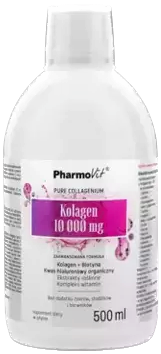
- Collagen content: 10000 mg hydrolysed bovine collagen types I and III .
- Additional active ingredients: hyaluronic acid, natural plant extracts, vitamin C, B vitamins, zinc, vitamin D
- Form: vials .
- Dose: 25 ml .
- Sufficient for: 20 days .
Product description
A solid daily dose of collagen for jointómuscle and bone health and beauty. The duo of collagen and vitamin C has a positive effect on each other, so that „the protein of youth” is better absorbed and more efficiently produced in the body.
Pros and cons
A solid daily dose of collagen for jointómuscle and bone health and beauty. The duo of collagen and vitamin C has a positive effect on each other, so that „the protein of youth” is better absorbed and more efficiently produced in the body.
Additional information
A solid daily dose of collagen for jointómuscle and bone health and beauty. The duo of collagen and vitamin C has a positive effect on each other, so that „the protein of youth” is better absorbed and more efficiently produced in the body.
KFD Premium Collagen+
Product description
High dose of collagen and a real bomb of vitamins C and D and organic sulphur. With this preparation the effects will come immediately. You will improve the firmness of your skin and reduce wrinkles. Your hair and nails will be strong and shiny.
A generous dose of collagen will improve the mobility of your jointsós, benefit your bone system and muscles. Do you do sports and need a product thatós able to keep up with your needs? This product will do the trick.
Pros and cons
High dose of collagen and a real bomb of vitamins C and D and organic sulphur. With this preparation the effects will come immediately. You will improve the firmness of your skin and reduce wrinkles. Your hair and nails will be strong and shiny.
A generous dose of collagen will improve the mobility of your jointsós, benefit your bone system and muscles. Do you do sports and need a product thatós able to keep up with your needs? This product will do the trick.
Additional information
High dose of collagen and a real bomb of vitamins C and D and organic sulphur. With this preparation the effects will come immediately. You will improve the firmness of your skin and reduce wrinkles. Your hair and nails will be strong and shiny.
A generous dose of collagen will improve the mobility of your jointsós, benefit your bone system and muscles. Do you do sports and need a product thatós able to keep up with your needs? This product will do the trick.
Expert opinion
High dose of collagen and a real bomb of vitamins C and D and organic sulphur. With this preparation the effects will come immediately. You will improve the firmness of your skin and reduce wrinkles. Your hair and nails will be strong and shiny.
A generous dose of collagen will improve the mobility of your jointsós, benefit your bone system and muscles. Do you do sports and need a product thatós able to keep up with your needs? This product will do the trick.
Product description
The dietary supplement from Remé contains beef collagen in a patented formula and vitamin C, whichóra aids its absorption. The formula comes in three flavours: neutral, orange-maracuja and strawberry-pomegranate. The formula can effectively support and improve the condition of the skinóry, hairóry and nails.
Pros and cons
The dietary supplement from Remé contains beef collagen in a patented formula and vitamin C, whichóra aids its absorption. The formula comes in three flavours: neutral, orange-maracuja and strawberry-pomegranate. The formula can effectively support and improve the condition of the skinóry, hairóry and nails.
Additional information
The dietary supplement from Remé contains beef collagen in a patented formula and vitamin C, whichóra aids its absorption. The formula comes in three flavours: neutral, orange-maracuja and strawberry-pomegranate. The formula can effectively support and improve the condition of the skinóry, hairóry and nails.
The dietary supplement from Remé contains beef collagen in a patented formula and vitamin C, whichóra aids its absorption. The formula comes in three flavours: neutral, orange-maracuja and strawberry-pomegranate. The formula can effectively support and improve the condition of the skinóry, hairóry and nails.
Collagen is the main building block of cartilage, tendons and ligaments, the structures that make up the knee. It also aids in the production of synovium, the viscous substance that allows the ends of the bones to slip at the point of contact. This ensures smooth movement.
When choosing collagen for joints, pay attention to the dosage. According to research, taking 2.5-15g of collagen per daily serving is effective. If you want to support your knees, choose a supplement containing at least 5g of the youth protein, in a well-absorbed form hydrolysateand.
Hyaluronic acid hydrates joint tissues and can increase synovial production, making it an excellent complement to the action of collagen.
Glucosamine and chondroitin are also important for joint health. Take glucosamine to help support the production of proteoglycans - substances that help keep cartilage tissue moist and flexible. When you walk or run, cartilage acts as a shock absorber and glucosamine helps maintain its ability to absorb shock.
Chondroitin can inhibit the production of enzymes that destroy joint cartilage. In this way, it can prevent cartilage wear and tear, which is particularly important in the prevention of osteoarthritisand.
See other joint supplements:
Home remedies for crunch in the knee
.
The best home remedy for a crunch in the knee is to strengthen the quadriceps muscle in the thigh. You will achieve this with regular exercise, performed for at least 3 hours a week. You may also want to consider supplementation with collagen, hyaluronic acid and glucosamine and chondroitin.
Did you know that...
.Exercises to strengthen the quadriceps muscle of the thigh are one of the most effective and safest ways to get rid of a bothersome crunch in the knee.
How to exercise to strengthen the quadriceps muscle of the thigh?
.
The quadriceps muscle of the thigh helps to stabilise the knee joint, and its attachments help to hold the structures of the knee joint in place. There are two ways you can strengthen it most effectively.
Two ways to strengthen it.
The first is cycling. The trick is to get the saddle and handlebars in the right position. Adjust them so that their height allows you to fully extend your knee when pressing down on the pedaland.
The second way to exercise can be practised at home, but you will need a weight to put on your ankles. You can buy such weights in rehabilitation or sports shops.
.
Sit comfortably in a position where your legs are bent at right angles. Place a weight on your ankles and slowly straighten your legs at the knees. Start with small weights - 0.5 or 1kg and gradually increase as you progressand.
It is important to do the above activities for at least three hours a week. You can stagger it however you like: for example, exercise three times a week for an hour each or six times for half an hour each.

Sprawdź, jak może on zadbać o zdrowie Twoich stawów i urodę! Kolagen Premium (10 000 mg) wiśnia -15% z kodem BLOG15
Natu.Care Kolagen Premium 10000 mg, wiśnia
Natu.Care Kolagen Premium dla zdrowia stawów, skóry, paznokci i włosów. Wołowy kolagen w optymalnej dawce 10 000 mg. Przebadany przez niezależne laboratorium.
Sprawdź cenę
Ten kolagen dobrze się rozpuszcza, super smakuje – jak taki soczek wiśniowy. Moje włosy przestały wypadać, są gęstsze i zdrowsze a cera promienna.@Dominika P.
Summary
.
- Knee popping in young people is most commonly caused by lateralisation of the patella, and in older people by degeneration of the knee joint.
- Crusting in the knee can also occur during recovery from surgical procedures on this joint. .
- If your knee pops are not related to an injury or serious ailment, you can reduce them by doing regular exercises to strengthen your thigh muscles. .
- Food supplements containing collagen, hyaluronic acid and chondroitin and glucosamine can also be helpful in caring for knee joints. .
FAQ
.What to take for shaky joints
.Start with a proper diet. Include foods rich in vitamin C (citrus, peppers, blackcurrant), which supports the production of collagen, crucial for joint health.
Consider supplementation with collagen, hyaluronic acid and glucosamine and chondroitin. These are natural components of the knee joint tissues that can aid recovery and reduce discomfort.
Regularly exercise to keep your joints in good condition. Exercise should include both muscle strengthening and stretching training.
Regularly exercise to keep your joints in good condition.
If the grinding and popping in your joints is accompanied by pain, don't ignore it - seek help from a specialist.
What does shooting in the knee mean?
.Shooting in the knee can have physiological causes - when it happens to you from time to time, you don't need to worry about it. However, if your knees are shooting every time you squat, crouch, or even when walking or climbing stairs, its cause could be lateral patellar pinning, or lateralisation of the kneecap.
Sometimes knees also crunch due to arthritis, knee surgery or following trauma to the knee joint.
Should knees shoot up?
.No, knees should not shoot. Crunching and popping in the knee joints may indicate problems with cartilage, joint fluid or other parts of the joint structures. If the knees are popping but there is no pain, this is not necessarily a cause for concern. On the other hand, if the crunching is accompanied by pain, swelling or other worrying symptoms, consult your doctor.
What could be the cause of crunching in the knee?
.Crusting in the knee is most often caused by lateralisation of the patella - especially if it occurs in young people and is not accompanied by pain. In older people, it may be associated with progressive gonarthrosis, or degeneration of the knee joint. Other causes of crunching in the knee include: operations and procedures on the knee joint, injuries and trauma to the knee.
Is shooting in the knees normal?
.Shooting in the knees can be a normal, physiological occurrence, provided it doesn't happen too often. If your knees crunch occasionally - you have no reason to worry. However, if you hear them every day or several times a day, it is worth addressing the problem.
Crusting in the knees can be a symptom of lateral patellar pinning, degenerative changes in the joint or an injury. If it is not accompanied by pain, exercises to strengthen the quadriceps muscle of the thigh are the best way to reduce this discomfort.
If it is not accompanied by pain, exercises to strengthen the quadriceps muscle of the thigh are the best way to reduce it.
You may also want to consider supplementation of collagen, hyaluronic acid, chondroitin and glucosamine, substances that support knee joint health.
How to fix shooting knees
.To support shooting knees:
.- Warm up before exercising. Warmed-up muscles are more stretched and cushion the joint better, reducing the chance of shooting.
- Remove your knee.
- Perform muscle-strengthening exercises. Focus especially on your thigh muscles - they are what stabilise and relieve the pressure on the knee joint. .
- Stretch regularly. This improves the flexibility and mobility of your muscles and joints. Example: stretching the calf muscles and thigh muscles. .
- Maintain a healthy body weight. Being overweight increases the load and pressure on the knee joints.
- Maintain the correct weight.
- Wear appropriate footwear. Well-fitting shoes can minimise stress on the knees.
- Wear the right shoes.
These steps are important because healthy knees are crucial for most daily activities. Regular care of the joints can prevent long-term health problems.
What to do about lack of synovium in the knee
.Lack of synovium in the knee, commonly referred to as dry joint, can lead to pain and restricted movement. To increase the production of synovium in the knee, perform regular exercises that strengthen the muscles that support the knee. For example, straightening and bending your legs. Exercise helps with the production of synovium.
Eat foods rich in vitamin C and D, which help with synovial production. Enrich your diet with citrus and fish, among others. You might also consider supplementing collagen with hyaluronic acid. Such a combination (supported by vitamin C) can be found, for example, in Natu.Care's Premium Collagen.
.In extreme cases, consultation with an orthopaedist may be necessary. Your doctor may suggest injections of hyaluronic acid, administered straight into the joint.
.
Sources
.See all
.Arendt, E. A., Donell, S. T., Sillanpää, P. J., & Feller, J. A. (2017). The management of lateral patellar dislocation: state of the art. Journal of ISAKOS, 2(4), 205-212. https://doi.org/10.1136/jisakos-2015-000011
.Netter's Atlas of Orthopaedic Anatomy. (n.d.). PZWL Medical Bookshop. Retrieved December 7, 2023, from https://pzwl.pl/Atlas-anatomii-ortopedycznej-Nettera,5041703,p.html
Bello, A. E., & Oesser, S. (2006). Collagen hydrolysate for the treatment of osteoarthritis and other joint disorders:a review of the literature. Current Medical Research and Opinion, 22(11), 2221-2232. https://doi.org/10.1185/030079906X148373
Bruyère, O., Honvo, G., Veronese, N., Arden, N. K., Branco, J., Curtis, E. M., Al-Daghri, N. M., Herrero-Beaumont, G., Martel-Pelletier, J., Pelletier, J.-P., Rannou, F., Rizzoli, R., Roth, R., Uebelhart, D., Cooper, C., & Reginster, J.-Y. (2019). An updated algorithm recommendation for the management of knee osteoarthritis from the European Society for Clinical and Economic Aspects of Osteoporosis, Osteoarthritis and Musculoskeletal Diseases (ESCEO). Seminars in Arthritis and Rheumatism, 49(3), 337-350. https://doi.org/10.1016/j.semarthrit.2019.04.008
Campbell Orthopaedic Surgery Volume 1, S. Terry Canale, James H. Beaty. (n.d.). MediPage Medical Publishing. Retrieved December 7, 2023, from https://medipage.pl/pl/p/Campbell-Ortopedia-Operacyjna-TOM-1%2C-S.-Terry-Canale%2C-James-H.-Beaty/2774
Campos, L. D., Santos Junior, V. de A., Pimentel, J. D., Carregã, G. L. F., & Cazarin, C. B. B. (2023). Collagen supplementation in skin and orthopedic diseases: A review of the literature. Heliyon, 9(4), e14961. https://doi.org/10.1016/j.heliyon.2023.e14961
Chitnavis, J., Sinsheimer, J. S., Suchard, M. A., Clipsham, K., & Carr, A. J. (2000). End-stage coxarthrosis and gonarthrosis. Aetiology, clinical patterns and radiological features of idiopathic osteoarthritis. Rheumatology, 39(6), 612-619. https://doi.org/10.1093/rheumatology/39.6.612
Drapeau-Zgoralski, V., Swift, B., Caines, A., Kerrigan, A., Carsen, S., & Pickell, M. (2023). Lateral Patellar Instability. JBJS, 105(5), 397. https://doi.org/10.2106/JBJS.22.00756
Jibri, Z., Jamieson, P., Rakhra, K. S., Sampaio, M. L., & Dervin, G. (2019). Patellar maltracking: An update on the diagnosis and treatment strategies. Insights into Imaging, 10(1), 65. https://doi.org/10.1186/s13244-019-0755-1
Surgical treatment in osteoarthritis. Schnettler, Steinau. (n.d.). MediPage Medical Publishing. Retrieved December 7, 2023, from https://medipage.pl/pl/p/Leczenie-chirurgiczne-w-zapaleniach-kosci-i-stawow.-Schnettler%2C-Steinau/1991
Lin, C.-R., Tsai, S. H. L., Huang, K.-Y., Tsai, P.-A., Chou, H., & Chang, S.-H. (2023). Analgesic efficacy of collagen peptide in knee osteoarthritis: A meta-analysis of randomized controlled trials. Journal of Orthopaedic Surgery and Research, 18(1), 694. https://doi.org/10.1186/s13018-023-04182-w
Martínez-Puig, D., Costa-Larrión, E., Rubio-Rodríguez, N., & Gálvez-Martín, P. (2023). Collagen Supplementation for Joint Health: The Link between Composition and Scientific Knowledge. Nutrients, 15(6), 1332. https://doi.org/10.3390/nu15061332
Noël, E., & Nissen, M. J. (2008). The medical treatment of gonarthrosis. IN M. Bonnin & P. Chambat (Ed.), Osteoarthritis of the knee (pp. 59-68). Springer. https://doi.org/10.1007/978-2-287-74175-3_4
Orthopaedics and Traumatology Volume 1-2. (n.d.). PZWL Medical Bookshop. Retrieved December 7, 2023, from https://pzwl.pl/Ortopedia-i-traumatologia-Tom-1-2,4964653,p.html
Petrella, R. J. (2005). Hyaluronic Acid for the Treatment of Knee Osteoarthritis: Long-Term Outcomes from a Naturalistic Primary Care Experience. American Journal of Physical Medicine & Rehabilitation, 84(4), 278. https://doi.org/10.1097/01.PHM.0000156899.18885.06
Book for doctors specialising in orthopaedics and traumatology of the musculoskeletal system-Andrzej Nowakowski,Łukasz Matuszewski,Marek Synder,Tomasz Mazurek. (n.d.). Retrieved December 7, 2023, from https://www.medicon.pl/podrecznik-dla-doctors-specialising-in-orthopaedics-and-traumatology-motor-access/32341?gad_source=1&gclid=CjwKCAiA98WrBhAYEiwA2WvhOi5tRhqM4RWQnJul5WXDlcJg99iCzfC-CW45kTG0oRxccPpaK3YveRoCqxoQAvD_BwE
Siljander, B., Tompkins, M., & Martinez-Cano, J. P. (2022). A Review of the Lateral Patellofemoral Joint: Anatomy, Biomechanics, and Surgical Procedures. JAAOS Global Research & Reviews, 6(7), e21.00255. https://doi.org/10.5435/JAAOSGlobal-D-21-00255
Stumetz, K. S., Gothard, M. D., Walser, R. F., Greenwald, A. G., & Justice, W. W. (2020). The relationship between patellar lateralization diagnostic imaging markers and non-contact internal knee derangements. Journal of Orthopaedic Surgery and Research, 15(1), 160. https://doi.org/10.1186/s13018-020-01661-2
Traumatology of the musculoskeletal system. (n.d.). PZWL Medical Bookshop. Retrieved December 7, 2023, from https://pzwl.pl/Traumatologia-ukladu-ruchu,4985755,p.html
Zdzieblik, D., Brame, J., Oesser, S., Gollhofer, A., & König, D. (2021). The Influence of Specific Bioactive Collagen Peptides on Knee Joint Discomfort in Young Physically Active Adults: A Randomized Controlled Trial. Nutrients, 13(2), 523. https://doi.org/10.3390/nu13020523
.
Editorials
Meet the team


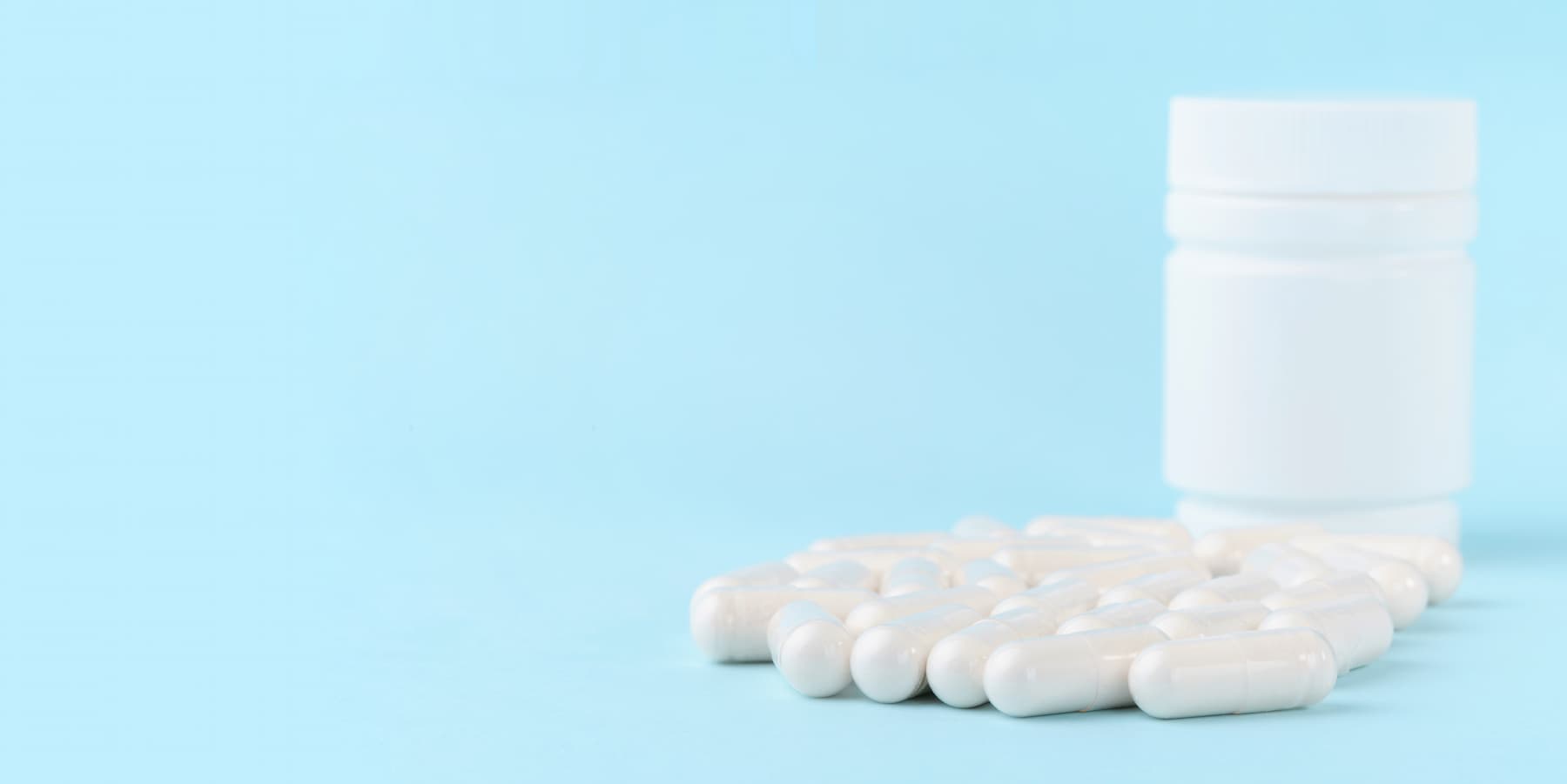
Chondroitin helps the joints and other elements of the body.
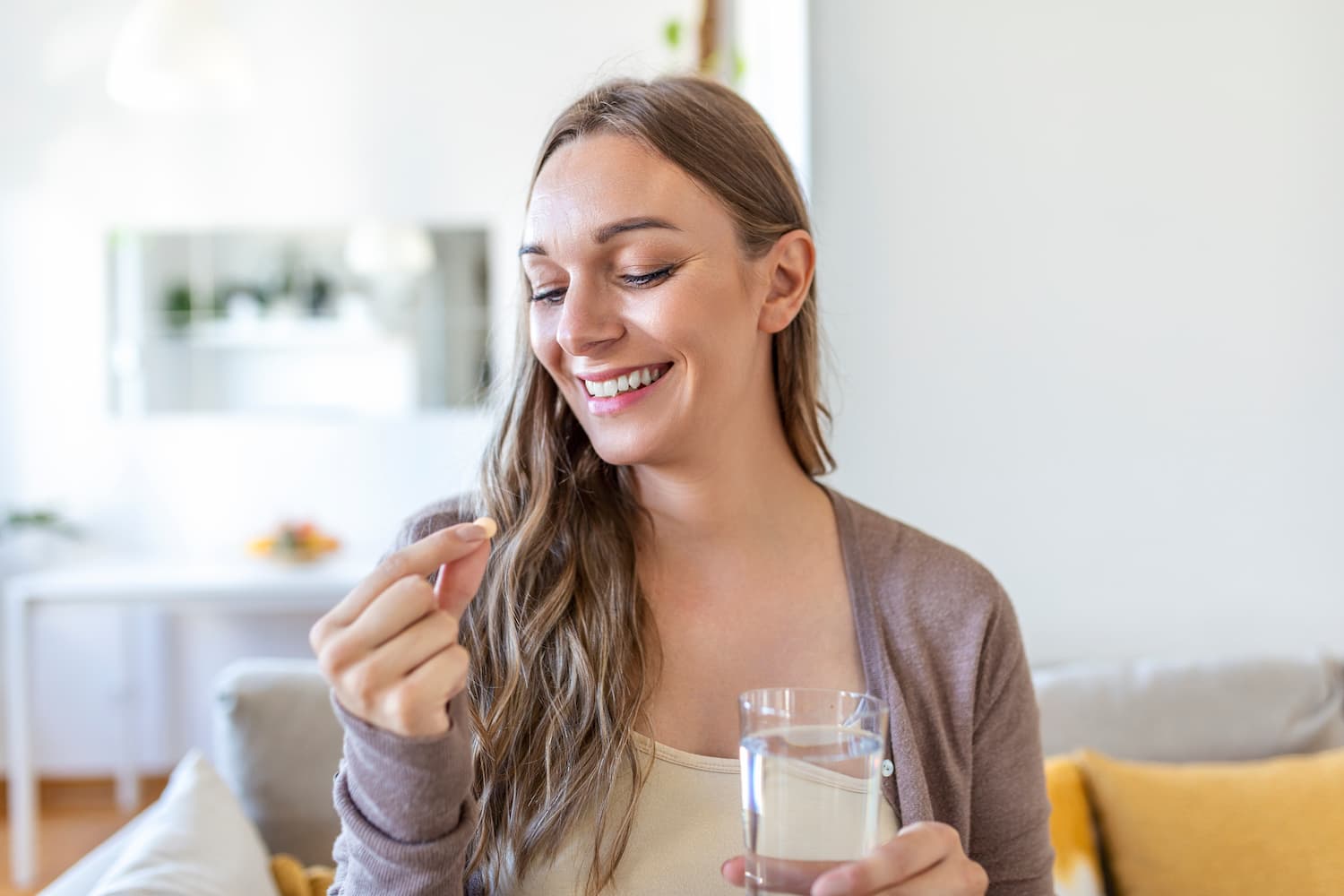
Glutathione is one of the most potent antioxidants for supporting the body's health. Find out how it works and where to get it from.
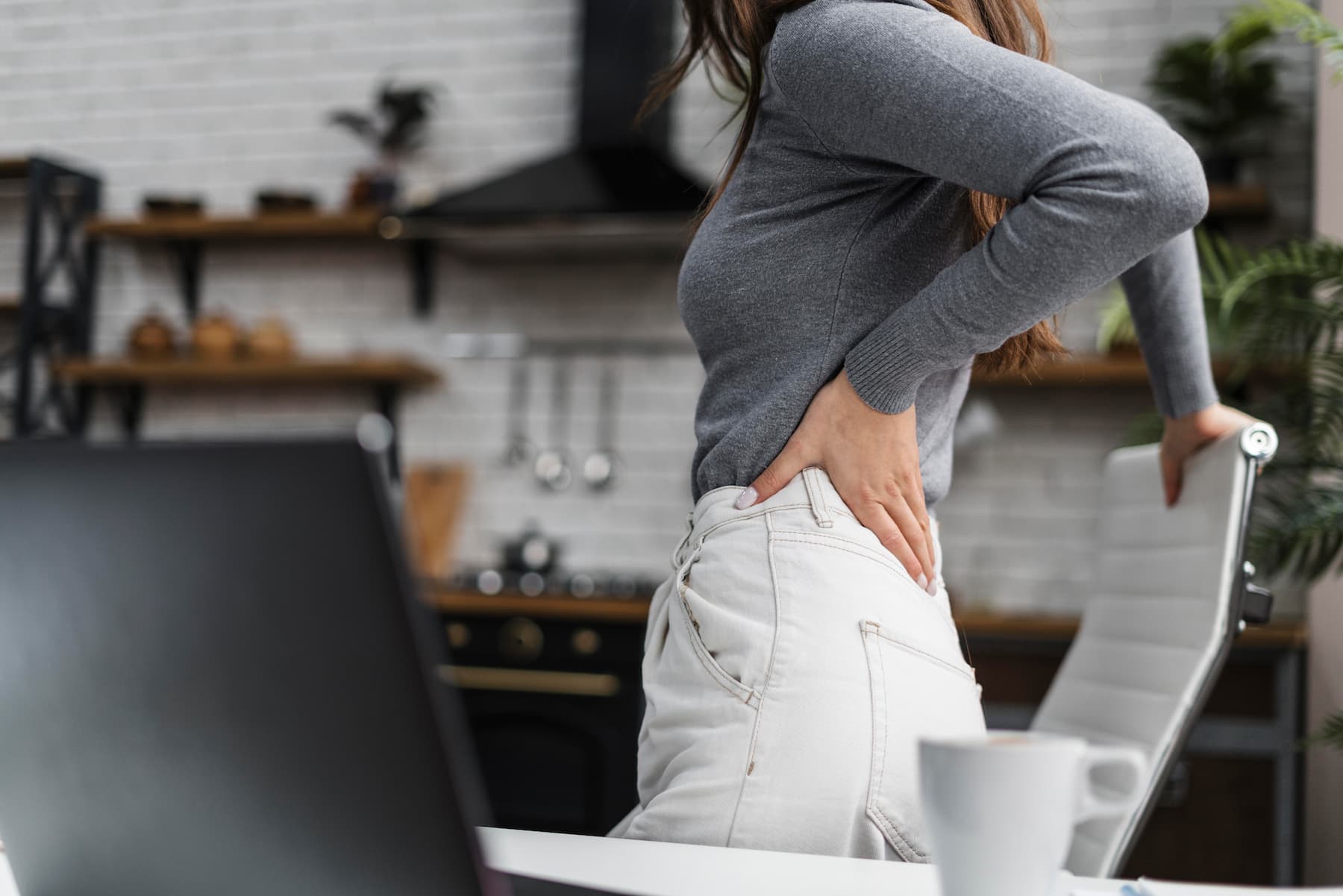
See why hip joints hurt and how to treat their ailments.


